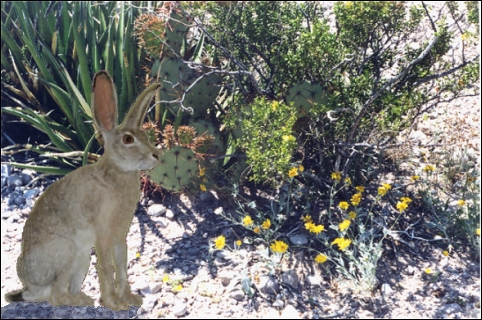

Like so much in the culture of the New World, the tale of the Easter Bunny has Old World origins, apparently from Germany in this case. The idea also appears to have been adapted for Christianity , although the rabbit, itself, was a pre-Christian symbol. Those who are familiar with rabbits can easily guess what they symbolized. Fertility, of course! Although the concept of giving is emphasized by today's Easter Bunny, the original idea is preserved in the nature of the gifts—eggs!
Although the Chihuahuan Desert lacks the species of rabbits that occur
in the Old World, we are not underprivileged by any means. Jackrabbits and cottontails
have been important to desert inhabitants throughout time—as food and, with the advent
of agriculture, as pests, as well. In our archaeological excavations, rabbits commonly
form the largest proportion of animal remains recovered. Early inhabitants undoubtedly
used snares, as well as rocks, throwing sticks, and other projectiles. Rabbit drives,
where animals were driven into long nets, also formed part of this food gathering. It
seems that humans benefited from the rabbits' fertility—and with such enemies,
rabbits certainly need it!

Listen to the Audio (mp3 format) as recorded by KTEP, Public Radio for the Southwest.
Contributor: Arthur H. Harris, Laboratory for Environmental Biology, Centennial Museum, University of Texas at El Paso.
Desert Diary is a joint production of the Centennial Museum and KTEP National Public Radio at the University of Texas at El Paso.

Black-tailed Jack Rabbit (Lepus californicus). Composite image of Centennial Museum display specimen and a Big Bend photograph by Kodi R. Jeffery.